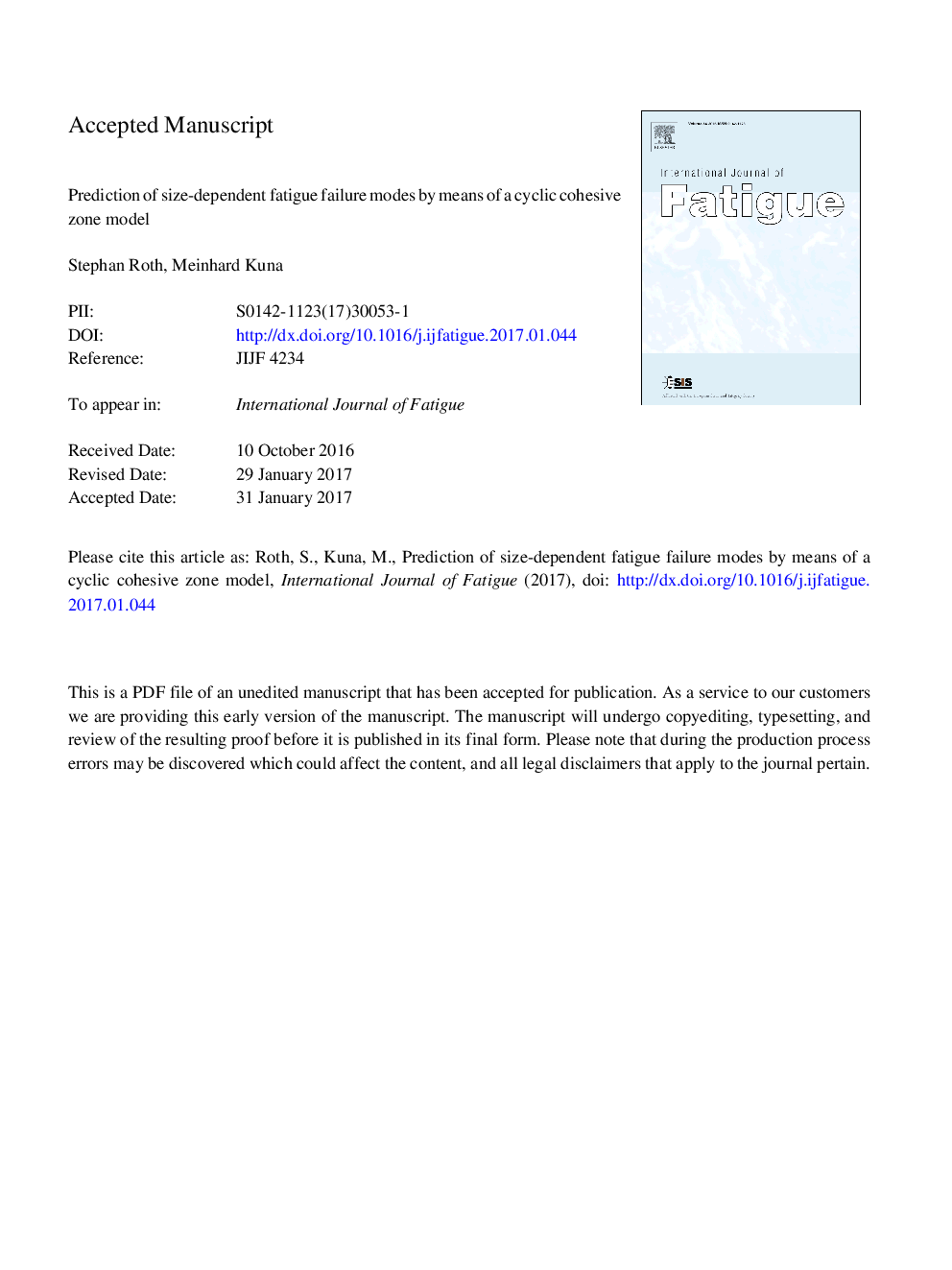| Article ID | Journal | Published Year | Pages | File Type |
|---|---|---|---|---|
| 5015117 | International Journal of Fatigue | 2017 | 33 Pages |
Abstract
Cyclic cohesive zone models offer the ability for a unique modelling of fatigue. The local damage processes occurring inside the cohesive zone manifest themselves macroscopically between two limiting cases of failure mode: uniform debonding and fatigue crack growth. In this study, we introduce a length ratio between the structural dimensions and the characteristic material length contained in the cohesive law. At the example of a modified double cantilever beam specimen, it is shown that this length ratio explains the size effect and the failure mode at the macroscopic scale. The analytically and numerically obtained results are plotted in failure maps, which show the predicted fatigue behaviour of the considered material in dependence on two loading parameters: nominal stress and J-integral. A cyclic failure assessment diagram (CFAD) is elaborated and the relationship to the well-known Kitagawa-Takahashi-Diagram is demonstrated. This way, cyclic cohesive zone models link classical failure assessment concepts of fracture mechanics and structural durability.
Related Topics
Physical Sciences and Engineering
Engineering
Mechanical Engineering
Authors
Stephan Roth, Meinhard Kuna,
